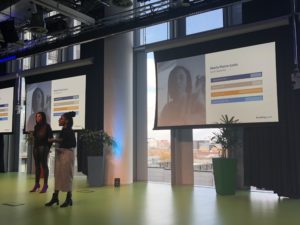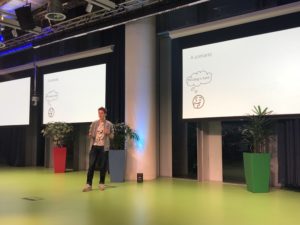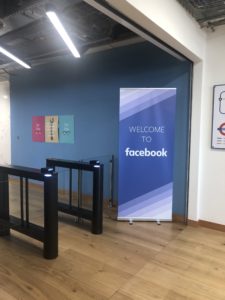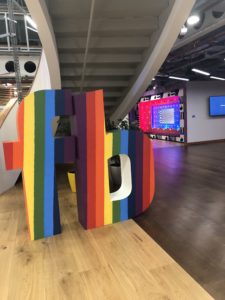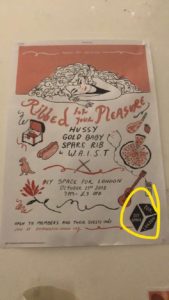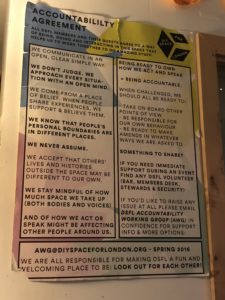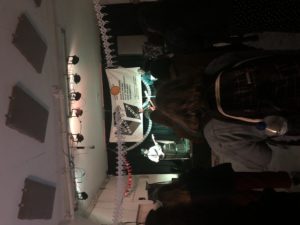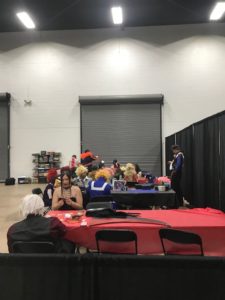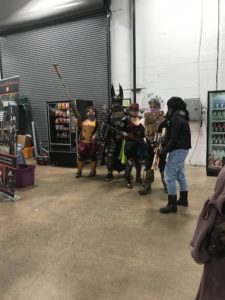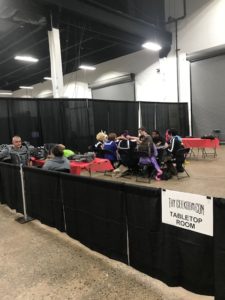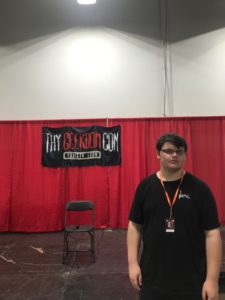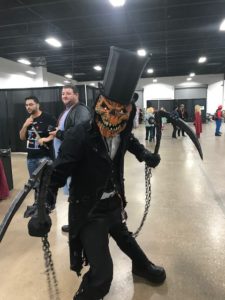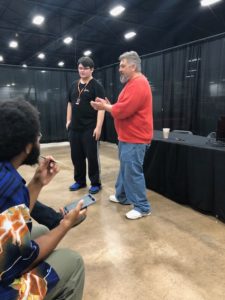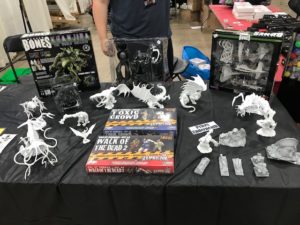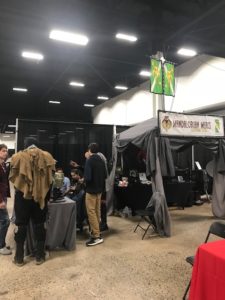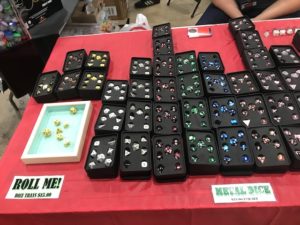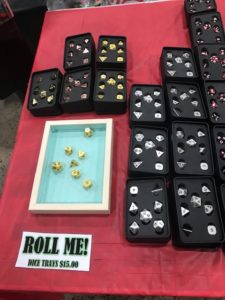Maker Faire NY 2018
For my industry event, I decided to go to Maker Faire in Queens, New York. Originally, I wanted to go to a more specialized event for music technology, but I didn’t find much luck with any of those events (either in a different country, already occurred, or occur next year). I also wanted to keep an open mind towards other innovations in case I wanted to take my project in a different direction. Thankfully, this was the perfect event for that. Maker faire had everything from music tech, to robots, to science exhibits, to interactive live arcade games, and much more. It felt like no matter how far I walked, I found something new everywhere I went. I’ll show some of the interesting things I stumbled across while I was there in case anyone else gets inspiration from these projects. I went with my sister, Gianna, and her boyfriend, Mike. You might see them in some of the pictures and videos I took.
Unfortunately, some of the videos are too large to embed, so I’ll leave a link to the files on Dropbox.
Synthesizers and Music Boxes
First up, we have a homemade synthesizer made by Wes. I asked him a few questions about how long this project took and what inspired him. He said it was an ongoing project for a few years and he just keeps adding to it as he finds more things to add. His inspiration actually compared well to our themes in class: what drains and energizes us. He is an electrical engineer and to take a break from the hardcore mathematics and science that goes along with the engineering field, he built this synthesizer where you can manipulate different sound waves and the frequencies at which they occur. I’ve only seen one physical synthesizer in my whole life, so this was a really cool sight to see. Perhaps, I’ll include some wave forms in my project.
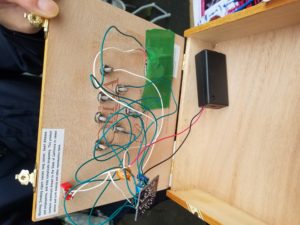
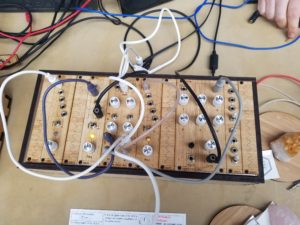
Directly next to the synthesizer tent, we have a musical boxes tent. I met with a man named Doug, who actually introduced me to a Masters music technology program that he manages at a local college in New York. I talked with him a lot about the program and he said that it’s a “pick your own adventure” type of program, where everyone goes down a different path. Some people decide to create innovations like what he made, whereas other people mix and master the sound for Sony, and every other part of the music technology spectrum.
In this video, you can see I’m moving my hand up and down. It might be hard to hear, but the frequencies change as I move my hand above the box.
Open Up Musical Box
Similarly to the last video, this innovation also changes frequency. However, instead of using your hand to change the frequency, you just open and close the box.
Musical Box
You can see I have trouble in the beginning of this video to get a sound out of this device. Once Gianna took the camera, I started to get some sound out of the box, but it was a little hard to understand. If I had more time with it, I could probably figure out how the frequencies interact with each button.
Robotics
Dinosaur Arm
Here’s what I like to call “The Dinosaur Arm.” As you can imagine, this attracted many people and I had to weasel my way in to get a video of the guy demoing the dinosaur. Unfortunately, I was not at this exhibit for too long so I couldn’t bombard him with questions. You can hear some of the conversation I had with him in the video. He mentioned that the head of the dinosaur was made entirely with styrofoam even though it looks like concrete and (to my sister’s observation) was hard upon contact. He also mentions that the lights in the eyes are made with LED light strings. If you’re into robotics, this is a type of project that might interest you.
Interactive Experiences
Live Arcade
Not all innovations have to use technology. I caught a glimpse of this project while I was walking past it. It was called “The Live Arcade,” and had two giant arcade machine structures in front of it. It seemed to me like this was an interactive experience for kids. I didn’t stay for the whole performance, but I thought it was cool how they made a potential arcade game into a live action setting.
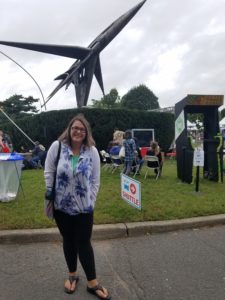
Bonus: here’s a cheesy picture of me in front of the exhibit
3D Printers
We’ve all seen 3D printers before, but have we seen a homemade 3D printer made with everyday materials? I sure haven’t. Unfortunately, the creator was having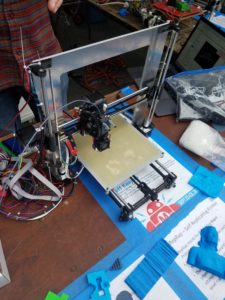 issues getting the printer to work, which I suppose is the downside to creating your own printer. He said it took him about a year to make since he has kids and a day job. However, he said if he spent all of his time working on it, he could have completed it in a weekend.
issues getting the printer to work, which I suppose is the downside to creating your own printer. He said it took him about a year to make since he has kids and a day job. However, he said if he spent all of his time working on it, he could have completed it in a weekend.
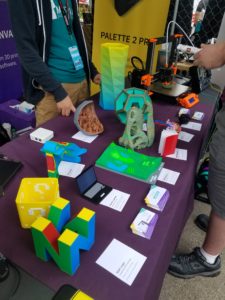 Then, I found a more sophisticated 3D printer, using many different colors. They had some convincing logo designs of Nintendo and other complicated structures. Mike and I both agreed that we can watch something being printed for hours. I personally don’t work with 3D printers, but I know of a lot of people that can benefit from these sophisticated designs.
Then, I found a more sophisticated 3D printer, using many different colors. They had some convincing logo designs of Nintendo and other complicated structures. Mike and I both agreed that we can watch something being printed for hours. I personally don’t work with 3D printers, but I know of a lot of people that can benefit from these sophisticated designs.
Go-karting
Who would’ve ever thought that a unicorn go-kart could go so fast?
Spare Parts
Remember how we kept talking about spare parts and using what’s available to us? That’s exactly what this one inventor did. He showed me two creations of his that were particularly interesting to me: the chair and the T-shirt. You can probably tell by looking at the chair that it is made out of coat hangers. However, at first sight of the T-shirt, you would think it’s a normal T-shirt (it felt like a T-shirt too). We found out that it was actually made entirely out of recycled water bottles! It’s innovative and helped the environment.
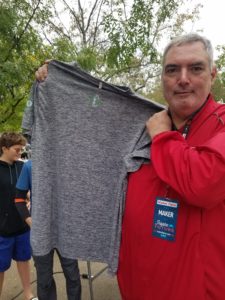
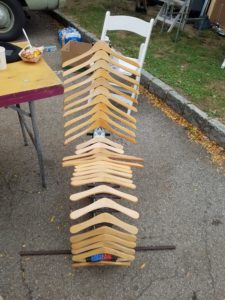
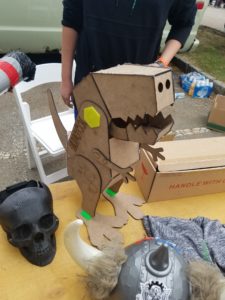 The other invention at this tent was created by a boy, who basically started his own business. He created what looks to be a robotic children’s toy made out of cardboard. He mentioned that he’s going to start commercializing it soon.
The other invention at this tent was created by a boy, who basically started his own business. He created what looks to be a robotic children’s toy made out of cardboard. He mentioned that he’s going to start commercializing it soon.
Little Houses
Here was a section that interested Mike quite a lot, since he’s looking for a house. These are called little houses and they are exactly what they sound like. Unfortunately I couldn’t get any pictures of the inside since it was crowded, but the interior looked like a miniature house, full with couches, a kitchen, bathroom, and bed!
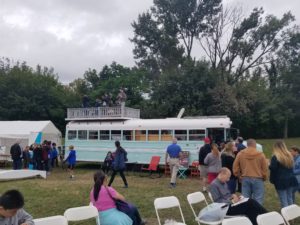
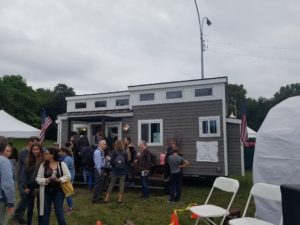
Upscaled Science Fair
There was also a “Science Fair-esque” exhibit indoors. There were a ton of projects that visualized different math and science formulas, as well as some cool mind tricks. While these were more so representative of an upscaled science fair, it was still great to see the visualizations and how the creators chose to showcase it.
User Friendly Microscope
Here, we see a microscope to see the bacteria in a certain body of water. I wasn’t paying attention to the actual bacteria, but the microscope itself. In high school, we used the old school microscopes where you had to put your eyes directly up to it and squint in order to see. Then there were all these different ways to adjust the quality of the microscope and it was really difficult to understand and work properly. This microscope not only allows the user to look at the bacteria from a reasonable distance, but there was only one knob to adjust the image. This makes it easy for users across all ages and leaves little room for error. I think everyone developing their senior thesis projects should keep “user friendly” design in mind.
Saturn’s Moon
This idea was cool in my head when I saw it, but looking back on it had a design flaw. The user is able to zoom in and out on Saturn’s moon by rotating the knob. The design is simple enough, but I think it would have been more user friendly if there was a slider instead of a rotating knob. While I was testing it, I found that I kept going past the point that I wanted to get to, and I would have to try and balance the knob in one spot.
The probability curve visualization was one of Mike’s favorite exhibits at Maker Faire. He said that in statistics, he struggled to understand the probability curve. Seeing it visualized like this made it easier to understand, and would have helped him when he was taking statistics.
Multiplication Machine
Here is a multiplication machine being tested by Gianna. You can see as she presses the buttons, the lit up patterns on the cube change. I’m sure future educators would love seeing this as a way to help kids understand multiplication.
There was no explanation next to this project, but it looked like an awesome art project made through some body recognition technology. Any artists here might get some inspirations from something like this.
Bubble Wall
There were a bunch of kids flooding to this area. I’m pretty sure you can hear a kid running over to this project when my sister was demoing it. It’s called the bubble wall and it looks just as fun as it sounds.
We’re in the age where we can do everything with our phones. Can we paint a picture with our phones? With this robot, we can! Sure, we’re not going to get the Mona Lisa with this device, but it makes for a cool abstract painting. Perhaps, in future iterations, they will make it more sophisticated so that the user can create realistic art pieces.
Video Game Wall
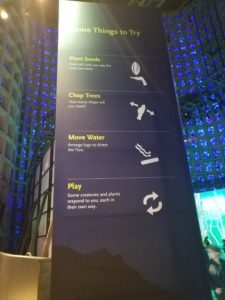 This was probably the coolest part of the whole exhibit. I know a lot of people are going into video game design, so I hope they look at this video for inspiration. This video game wall allowed everyone to plant and chop down trees and interact with the virtual environment in a number of different ways. There were also these logs on the ground (one of which I tripped over and nearly broke my ankle), which move the water on the screen. There were so many interactive possibilities in this one space. If I was a kid, I would be having a field day in there and never want to leave.
This was probably the coolest part of the whole exhibit. I know a lot of people are going into video game design, so I hope they look at this video for inspiration. This video game wall allowed everyone to plant and chop down trees and interact with the virtual environment in a number of different ways. There were also these logs on the ground (one of which I tripped over and nearly broke my ankle), which move the water on the screen. There were so many interactive possibilities in this one space. If I was a kid, I would be having a field day in there and never want to leave.
Musical Chair
Here is another music related piece. It’s called the musical chair, and you’ll see that as Gianna opens and closes the chair, the pitch and frequency change. It looked cool, but I’m not sure what the functionality of it would offer.
Language Loom
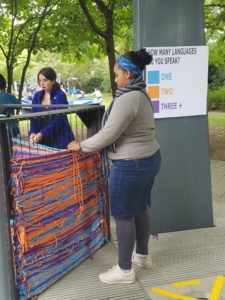 This wasn’t so much a breakthrough innovation, but it was an interesting insight on the people that come to Maker Faire. People would grab a giant loom and pick the color based on how many languages you speak. I didn’t stay until the end of the day, but I can only imagine that the loom grew even larger by the end of the day.
This wasn’t so much a breakthrough innovation, but it was an interesting insight on the people that come to Maker Faire. People would grab a giant loom and pick the color based on how many languages you speak. I didn’t stay until the end of the day, but I can only imagine that the loom grew even larger by the end of the day.
oneTesla
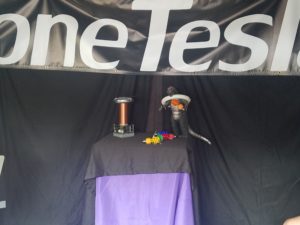 Last, but certainly not least, we have oneTesla, a musical kit made out of Tesla coil. This was my favorite innovation I had seen and truly showcased the blend between technology and music. If you buy the kit, you can use your own MIDI files (no more than two notes at a time) to play on the Tesla coil. It’s a different way to experience music and adds to the experience with listening and composing musical pieces.
Last, but certainly not least, we have oneTesla, a musical kit made out of Tesla coil. This was my favorite innovation I had seen and truly showcased the blend between technology and music. If you buy the kit, you can use your own MIDI files (no more than two notes at a time) to play on the Tesla coil. It’s a different way to experience music and adds to the experience with listening and composing musical pieces.
oneTesla Music
To wrap up this post on my industry event, I would like to say that Maker Faire was an interesting and inspiring experience. I suggest that everyone should go at least once to see all of the ideas and innovations people have to offer. I hope my experience has inspired some of you!
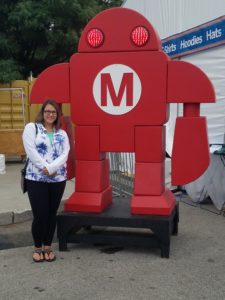
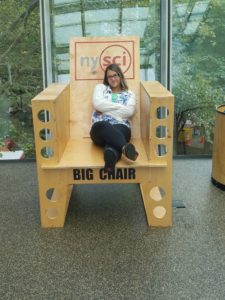
Here’s a link to my whole Dropbox folder of the event. There are some things in there that I didn’t include in the report. Feel free to check out some of the other projects I stumbled across at Maker Faire!
IMM Senior Thesis Dropbox Folder

